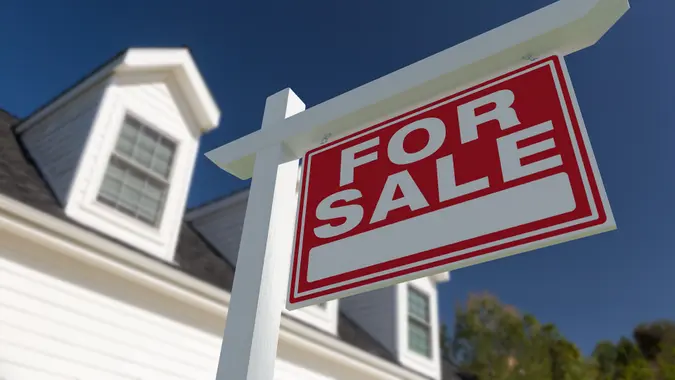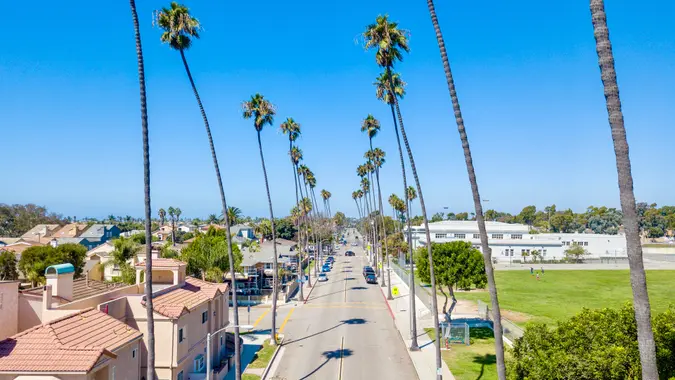Top 5 Cities With the Worst Housing Market Outlook (3 Are in the Pacific Northwest)

Commitment to Our Readers
GOBankingRates' editorial team is committed to bringing you unbiased reviews and information. We use data-driven methodologies to evaluate financial products and services - our reviews and ratings are not influenced by advertisers. You can read more about our editorial guidelines and our products and services review methodology.

20 Years
Helping You Live Richer

Reviewed
by Experts

Trusted by
Millions of Readers
House hunters haven’t had much to cheer about the last few years, with record home values and tight inventory pricing many out of the market. That dynamic has begun to change in 2025 amid a general increase in the number of homes for sale.
But there are still pockets of the country where finding a home remains a challenge — especially in the Pacific Northwest. In fact, that region is home to three of the five U.S. cities with the worst housing market outlook, according to a new analysis from LendingTree. LendingTree based its rankings on four key metrics: vacancy rates, housing unit approvals per 1,000 housing units, home value-to-income ratio, and annual changes in home value-to-income ratio.
Low vacancy rates indicate there aren’t many unoccupied homes in a particular city. This is usually a sign of heavy demand, stiff competition — and high prices. Similarly, a high home value-to-income ratio is a sign that homes are comparatively expensive. For example, a ratio of 5.0 means median home values are five times more than the median income. A ratio of 2.0 means values are only twice the median income.
Here’s a look at the five cities with the worst housing outlooks, per LendingTree:
Portland, Oregon
- Vacancy rate: 4.76%
- Housing unit approvals per 1,000: 8.69
- Home value-to-income ratio: 5.57
- Change in ratio, 2022-23: 3.87%
Boise, Idaho
- Vacancy rate: 4.56%
- Housing unit approvals per 1,000: 29.37
- Home value-to-income ratio: 5.25
- Change in ratio, 2022-23: 7.12%
Bridgeport, Connecticut
- Vacancy rate: 6.70%
- Housing unit approvals per 1,000: 5.33
- Home value-to-income ratio: 4.75
- Change in ratio, 2022-23: 3.98%
Spokane, Washington
- Vacancy rate: 6.33%
- Housing unit approvals per 1,000: 15.75
- Home value-to-income ratio: 5.02
- Change in ratio, 2022-23: 7.17%
Salt Lake City, Utah
- Vacancy rate: 5.31%
- Housing unit approvals per 1,000: 12.57
- Home value-to-income ratio: 5.03
- Change in ratio, 2022-23: 4.58%
The main problem house hunters face in these cities is that there simply aren’t enough homes available to buy, according to Matt Schulz, LendingTree’s chief consumer finance analyst and author of “Ask Questions, Save Money, Make More: How to Take Control of Your Financial Life.”
“The vacancy rates in Portland and Boise are less than half of those in many other big metros,” Schulz said in a press release. “When that happens, prices rise, making things even more expensive. Unfortunately, this isn’t likely to change in many of the most troubled metros because the data shows that insufficient building is being done.”
In other parts of the country, however, market dynamics are trending in favor of buyers. Pending home sales in the U.S. decreased 6.3% in April, according to the latest data from the National Association of Realtors (NAR). A decline in sales typically means sellers have to make more concessions to buyers.
“Homebuyers in nearly every region of the country are in a better position to negotiate more favorable terms,” NAR Chief Economist Lawrence Yun said in a statement.
More From GOBankingRates
 Written by
Written by  Edited by
Edited by 

























